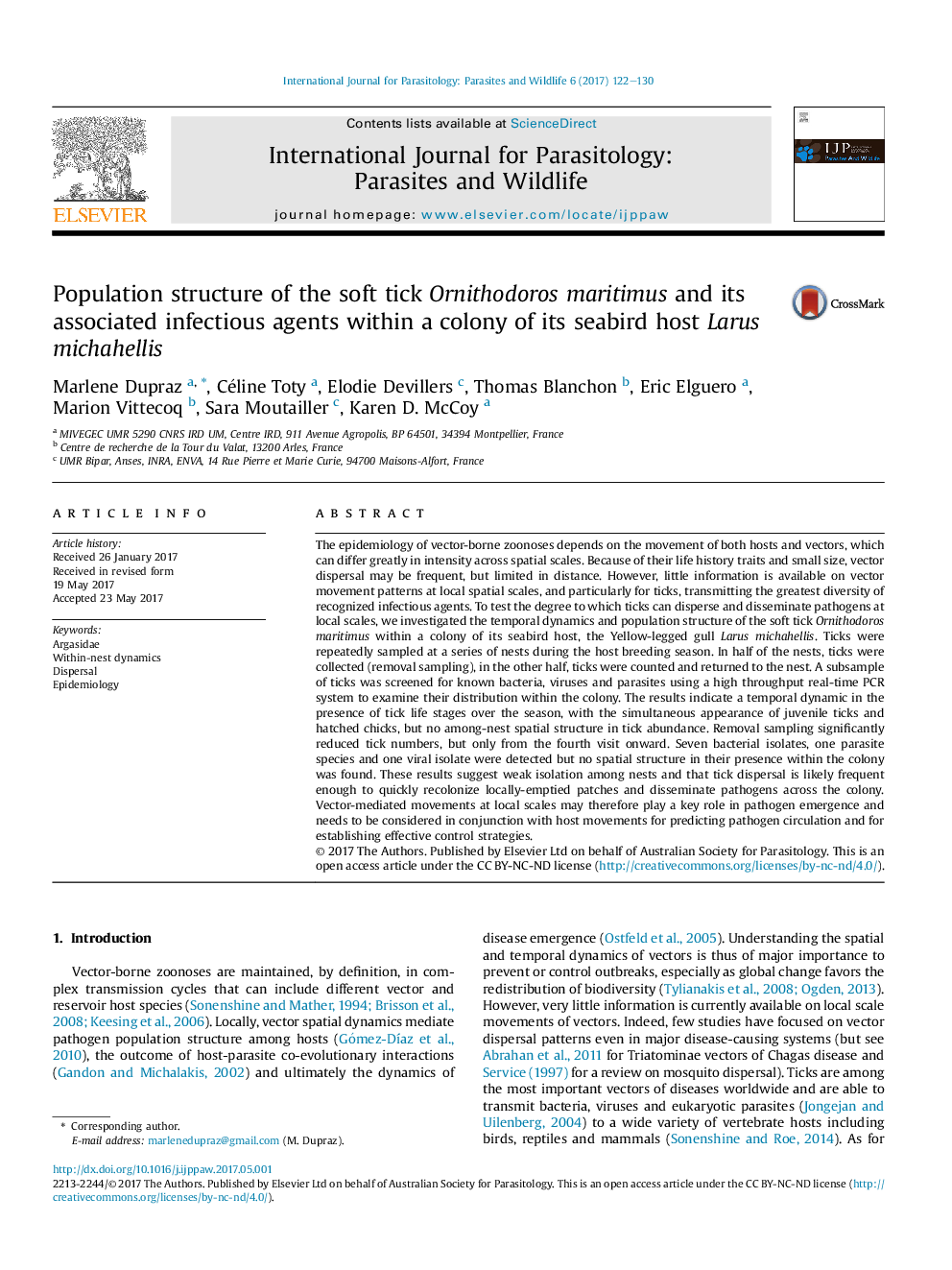| کد مقاله | کد نشریه | سال انتشار | مقاله انگلیسی | نسخه تمام متن |
|---|---|---|---|---|
| 5517930 | 1401040 | 2017 | 9 صفحه PDF | دانلود رایگان |

- A temporal dynamic in the abundance of tick stages was found over the season.
- Destructive sampling reduced tick abundance near the end of the sampling period.
- No spatial structure in the ticks or infectious agents was detected.
- Relatively frequent tick movements among nests were suggested.
The epidemiology of vector-borne zoonoses depends on the movement of both hosts and vectors, which can differ greatly in intensity across spatial scales. Because of their life history traits and small size, vector dispersal may be frequent, but limited in distance. However, little information is available on vector movement patterns at local spatial scales, and particularly for ticks, transmitting the greatest diversity of recognized infectious agents. To test the degree to which ticks can disperse and disseminate pathogens at local scales, we investigated the temporal dynamics and population structure of the soft tick Ornithodoros maritimus within a colony of its seabird host, the Yellow-legged gull Larus michahellis. Ticks were repeatedly sampled at a series of nests during the host breeding season. In half of the nests, ticks were collected (removal sampling), in the other half, ticks were counted and returned to the nest. A subsample of ticks was screened for known bacteria, viruses and parasites using a high throughput real-time PCR system to examine their distribution within the colony. The results indicate a temporal dynamic in the presence of tick life stages over the season, with the simultaneous appearance of juvenile ticks and hatched chicks, but no among-nest spatial structure in tick abundance. Removal sampling significantly reduced tick numbers, but only from the fourth visit onward. Seven bacterial isolates, one parasite species and one viral isolate were detected but no spatial structure in their presence within the colony was found. These results suggest weak isolation among nests and that tick dispersal is likely frequent enough to quickly recolonize locally-emptied patches and disseminate pathogens across the colony. Vector-mediated movements at local scales may therefore play a key role in pathogen emergence and needs to be considered in conjunction with host movements for predicting pathogen circulation and for establishing effective control strategies.
456
Journal: International Journal for Parasitology: Parasites and Wildlife - Volume 6, Issue 2, August 2017, Pages 122-130